Wooden doors are a really beautiful and environmentally friendly thing. Unfortunately, although Russia is rich in forests, the cost of carpentry is not cheap today. But in addition to manufacturing, you need to hang hinges with a lock on the door, polish it, and then put it. The price goes up even further. Is it possible to save money by covering the doors with wood stain and varnish at home, while not poisoning yourself or your neighbors? Of course you can, and I will now tell you how to do it.
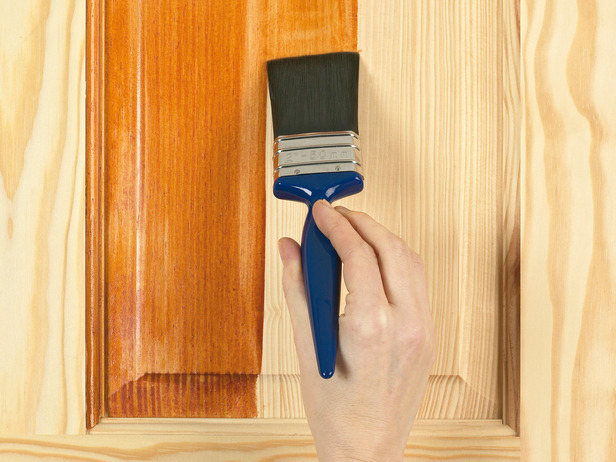
@ amazonaws.com
The content of the article
- Why varnish woodwork
- What materials are suitable
- Preparatory stage
- Grinding process
- Tinting
- Coating varnishes
Why varnish woodwork
Many, looking at a wooden door, are perplexed - why spoil the natural beauty with stains and varnishes? Yes, this is an argument - the wood grain is very beautiful and without any impregnation. But, Firstly, over time, the same pine dries up without processing and the difference in texture, especially on glued door panels, begins to be striking. Hence the answer follows: why use wood stain - to align the color scheme of wood.

@ stroirem.net
Second - deeply impregnated stain, as a rule, is an antiseptic, and the likelihood of the appearance of fungus after treatment is significantly reduced.
And the third - with proper processing, the texture of the wood with the help of stain can be very effectively emphasized.
As for varnish, in addition to protection from moisture and ultraviolet radiation, it has good decorative properties. If you do not want the door to shine after varnishing like cat's eyes in the dark, then matte varnish will suit you.
What materials are suitable
Let's start from the fact that you don't have a spray gun and a workshop. And to the neighbors, and to you too, the smell of white spirit or 646 is not at all sweet and pleasant. Then we will safely delete all these materials with caustic solvents.
What do we have left? Deep penetrating alcohol stain and a whole line of acrylic materials. And this, my friends, is not so little. Let's start with pluses of acrylic:
- the possibility of using water as a solvent;
- non-toxic to humans and animals;
- undemanding to the premises regarding dust;
- a spray gun is not required for work;
- acrylic varnish, unlike polyurethane or nitrocellulose, practically does not change the natural color of the wood;
- the acrylic film is flexible and durable.
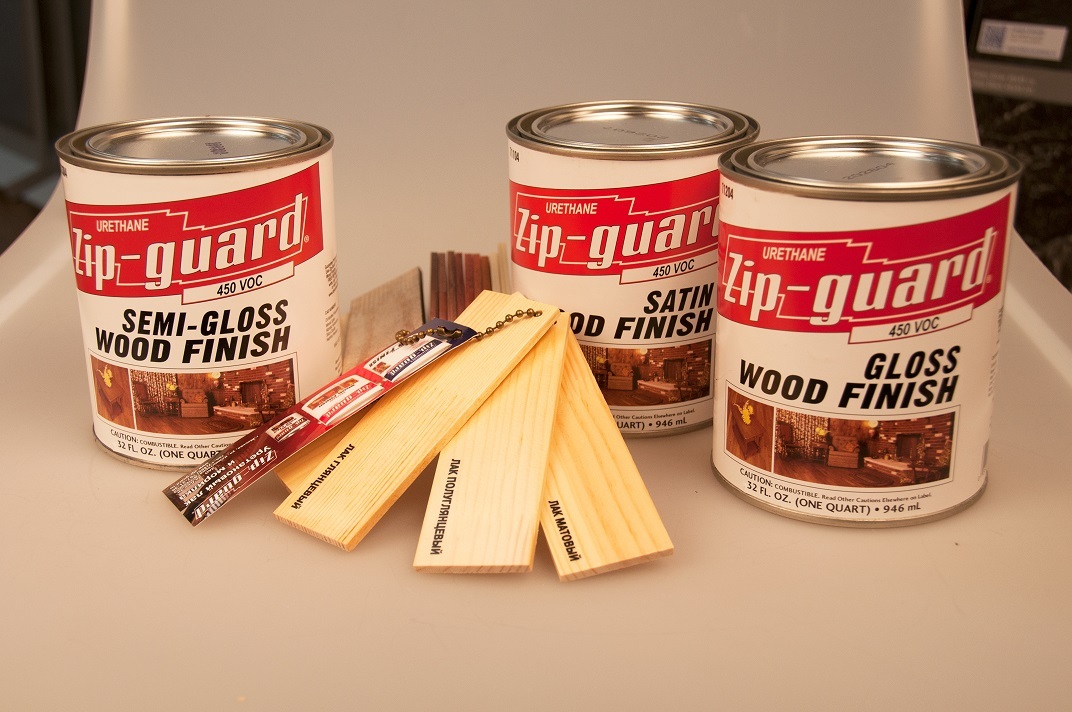
@ tbmmarket.ru
As for cons, then there are few of them:
- The time for complete drying of the layer at +20 degrees can be more than a day. Do not be fooled by the fact that whitish stains have disappeared from the surface of the wood - the varnish can stick for another two to three days.
- The working temperature of acrylic materials is not lower than +5 degrees. Otherwise, they dry for a long time and painfully. And since water serves as a solvent for acrylic, as a result, an ice crust can be obtained on the surface of the wood instead of a layer of varnish.
- Good acrylic lacquer firms Tikkurila, Eskaro or Zip Guard, like any worthwhile thing, is quite expensive. And take something domestic from paints and varnishes - unless you are varnishing the door not for yourself.
The only way to save money is to use alcohol stain for the first layer of tinting. It really costs a penny, and it just eats up tightly. But it can only be applied to bare wood - no preliminary primers! And this stain does not like putty, stains can be very noticeable. Therefore, pay special attention preliminary grinding door, remove all excess putty and wood glue from it.
Preparatory stage
Let's make a reservation right away - we are now talking about joinery made of inexpensive types of wood - pine, alder, spruce. If you have enough money for oak or ash doors, and you are not a painter for wood - give up self-varnishing, do not spoil the product. Hire a professional, he will polish everything right. Do not touch products with decorative veneer - they can be spoiled irrevocably.
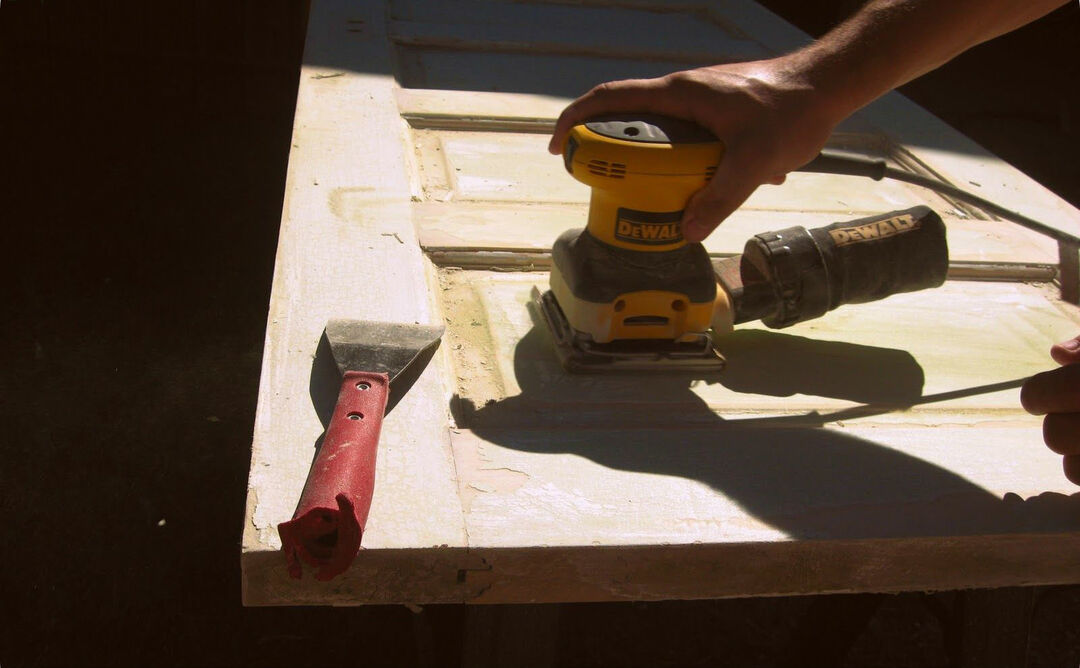
@ pinterest.ru
First of all, you need to find a table that is large and sturdy enough, of a comfortable height. If he is too low, the back from the position bent over him will soon make itself felt. A clean, soft and thick rag is spread on the table, and a door is placed on top to avoid dents and damage on it. This is especially true for spruce, pine or alder joinery.
If glass door, and it is impossible to take them out (or reluctance), they are pasted over with masking tape. Make sure that the tape does not cover the wood, all overlaps are carefully trimmed with a clerical knife.
To identify dents, cracks and other flaws, organize several light sources in the room, and so that they illuminate the door obliquely, and not strictly vertically. View the plane and door panels at different angles, and eliminate blemishes before sanding. There are three main ways to do this:
- using a mixture of sawdust and glue;
- choosing a putty suitable for the color scheme;
- or by stamping a gap or hole with a piece of wood planted on glue.
Attention! The putty under the varnish can strongly change color. Check on some block how it will look. By the way, after it dries, you can (and should) draw the texture of the wood on it with a colored pencil - it looks much more natural. These arts are practiced after the first polishing of the canvas.
Door frame it is best to putty, sand and varnish disassembled. It is easier, and you can immediately check the color of its ends and casing. There is no particular problem in this - today the boxes are assembled mainly on self-tapping screws, and not on pins or nails, as before.
Grinding process
I will assume that you have a sander (vibration or eccentric). The draw frame can also be operated, but it leaves streaks in the wood. No need to use fine emery! If this is done, a surface that is too smooth will not absorb the stain well. As a result, it will be easy to even accidentally tear it off, and when tinting the door, drips cannot be avoided. Therefore, we take the grain P100, you can even P80, and grind all planes with a machine. Then we manually go through the moldings and figars on the panels. Don't forget about side ends doors - they are clearly visible.
Only the back sides are not putty or sanded on the boxes. Do not forget to lacquer them, by the way, otherwise they can take moisture from the wall.
Tinting
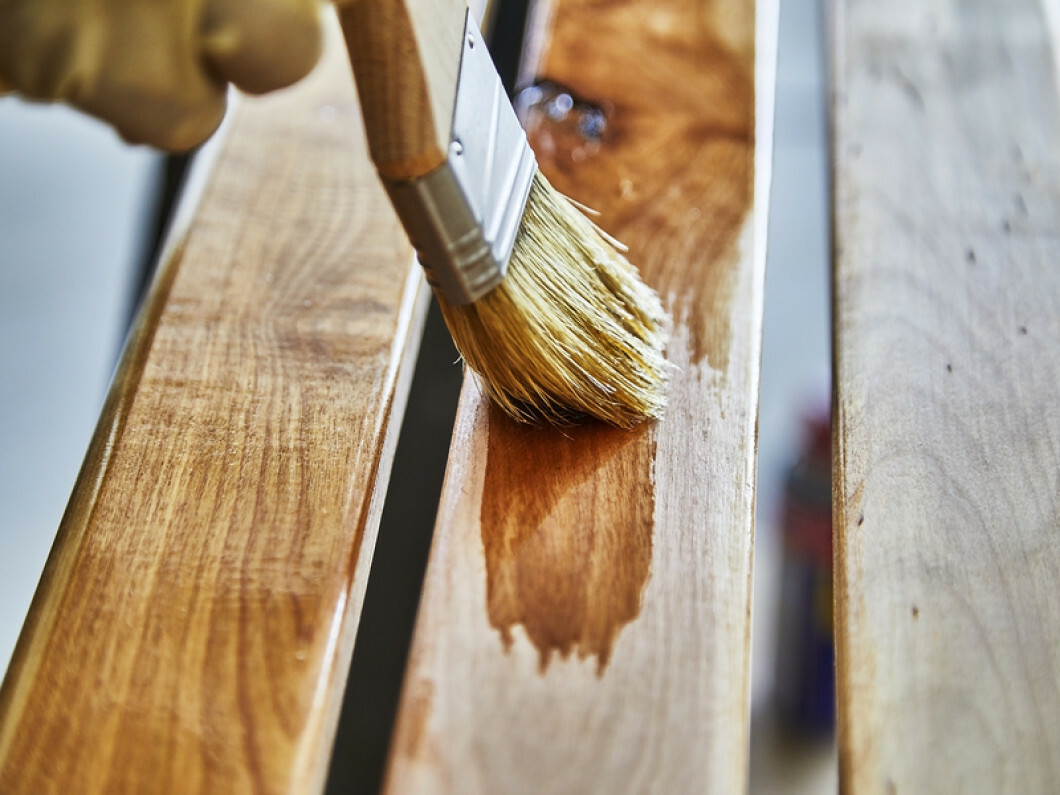
@ familychoicepainting.com
The preparatory stage is the most tedious in the varnishing process. When finished, carefully remove wood dust from the surface of the canvas. Then, from the lower and upper ends, a pair of nails of 150-200 mm are driven into the door to a depth sufficient to hold it on the painting trestles (this is probably 3-4 centimeters). They are driven in at such a distance that it is convenient to turn the door on the goats over.
On a note. If you drive in three nails (two - on the sides of the lower end, one - in the middle of the upper), the door on the trestle can be turned over without a partner.
Before using, it does not matter whether it is varnish or stain, they are filtered. This can be done by taking old women's tights and putting them on a container with varnish. I hope this will not be a problem.
You can apply the stain with a brush, but the usual one is better for these purposes. dish sponge. It is like rubbing the stain into the wood and removing the excess. Try how it lays down and dries on an unnecessary block, then go to "clean copy".
If necessary, apply several layers of stain, wait for it to dry completely. Then the door is very carefully polished with fine (P240) emery, and a second layer is applied.
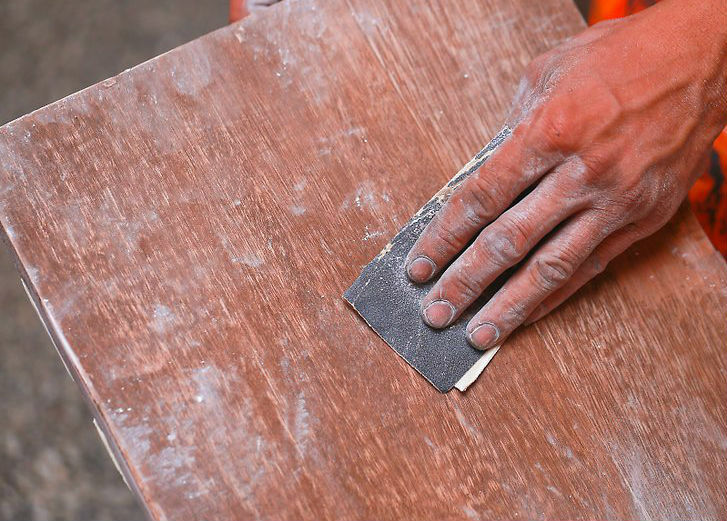
@ wikihow.com
Attention! After the last layer of stain, the wood is not sanded, the first layer of varnish is immediately applied to fix the result.
Coating varnishes
It's a little easier here. The varnish is applied with a brush along the grain or with the same dish sponge. Before turning the door on the trestle, the varnish is allowed to settle. How much - it all depends on the consistency of the varnish. You can tell by the drips on the door whether the varnish has stood enough.
Between each layer of varnish, after it has dried, the door is sanded with fine emery. During the sanding process, the emery should not stick to the door and quickly clog, and the varnish should come off as a powder, and not roll.
Usually three coats of varnish are enough, but sometimes it is not enough. It is purely intuitive to determine whether the quality of the varnishing suits you. If the surface is smooth and there is a good layer of varnish to the touch, then there is no need to cover any more.
Do not forget to varnish the upper and lower ends of the door. If they are not visible, this does not mean that they will not take moisture from the air.
Subscribe to our Social Networks


